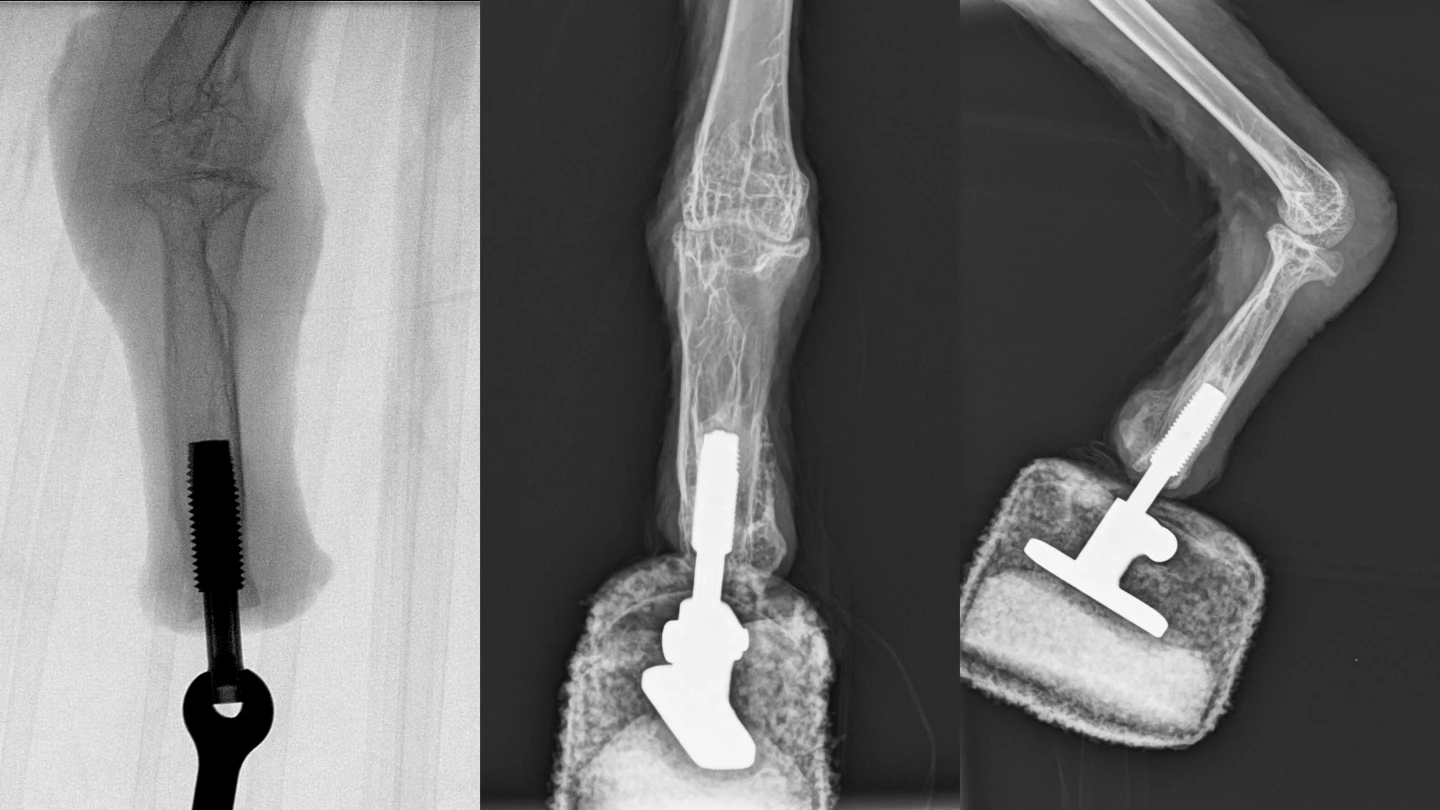Although there have already been birds that received strap-on artificial legs, scientists are now reporting the first successful integration of a prosthetic foot directly into a stork's residual leg bone. They're describing the animal as the world's first "bionic bird."
Named Mia, the bird in question is a female bearded vulture, which is the largest type of flying bird in Europe. She's housed at the Owl and Bird of Prey Sanctuary located in Haringsee, Austria. Mia was initially brought into the sanctuary with a severely injured foot, which ultimately had to be amputated.
While smaller birds might be able to get by with just one foot, such a loss would make it very difficult for heavier birds (like bearded vultures) to land, walk, or hold down their prey. With these problems in mind, a team at the Medical University of Vienna decided to give Mia a permanently attached new foot.
The group was led by Prof. Oskar Aszmann, who was previously responsible for tasks such as outfitting three human amputees with mind-controlled bionic arms.
For the vulture, the team utilized a process known as osseointegration, in which the base of the artificial foot was joined directly to the end of the leg bone in the bird's residual stump. Mia began attempting to walk within three weeks of the surgery, and was putting her full weight on the foot after six weeks. She is now reportedly walking and landing normally.

"This concept offers a high degree of embodiment, since osseoperception provides direct intuitive feedback, thereby allowing natural use of the extremity for walking and feeding," says Aszmann. "For the first time we have now successfully bionically reconstructed the limb of a vulture."
A paper on the procedure – which also involved Rickard Branemark from San Francisco's Center for Osseointegration Research – was recently published in the journal Scientific Reports.
Source: Medical University of Vienna





